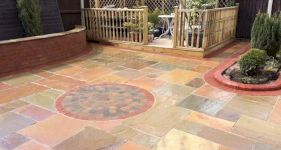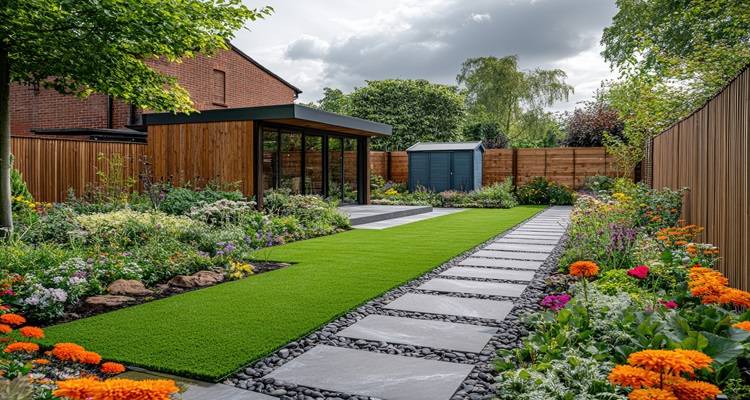Shed Installation Guide
Are you thinking about installing a shed in your garden?
This article will provide you with all of the information you need about installing a shed, including the process of installing a shed, garden shed installation costs, the pros and cons, and what to look for when hiring someone to install your garden shed for you.
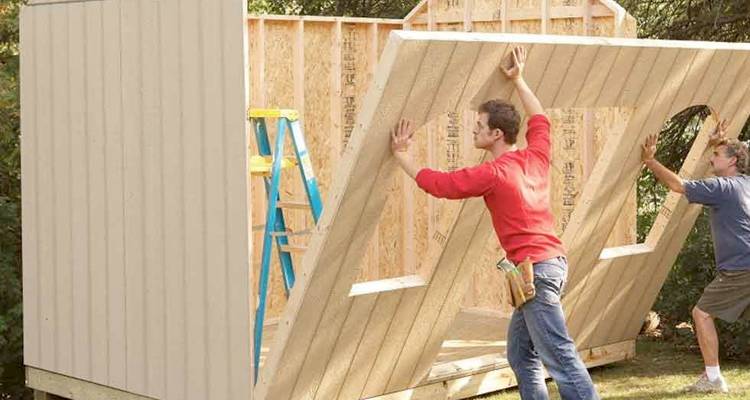
Table of Contents
- What is a Shed Installation?
- Types of Shed Installation
- Garden Shed Design Ideas
- What Are the Pros and Cons of a Garden Shed?
- How Much Does It Cost to Install a Shed?
- How to Build a Garden Shed
- How Long Does It Take to Build a Shed?
- Building Regulations or Planning Permission Approval for Shed Construction
- How to Clean and Maintain a Shed
- Shed Repairs
- Questions to Ask When Hiring a Shed Specialist
- FAQs
- Sources
What is a Shed Installation?
A shed installation involves building and placing a shed in your garden. Sheds are most commonly used for storage and provide an area outside to store your garden essentials such as your lawnmower, bicycles, or gardening equipment.
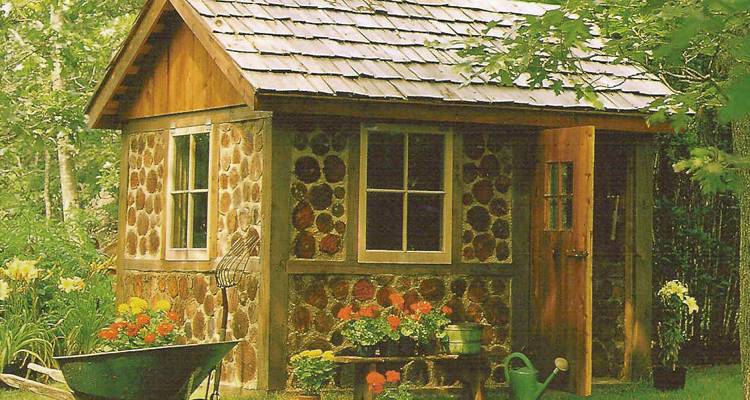
A shed installation is especially useful for homes that don’t have any alternative outdoor storage, such as a garage. They can be placed in most gardens and come in a range of different sizes and styles.
Types of Shed Installation
There are several different types of shed installation, and it all comes down to the type of foundations used for the shed.
A good shed base can add years and years to the life of your shed, so it’s important to set the foundations well and use the right type of foundations for the shed that you’re building.
Below is a list of the different types of shed foundations which can determine the type of shed installation:
Tanalised Timber Battens
Timber battens that are laid loosely under the shed are not ideal, but they are definitely better than nothing. This type of foundation involves laying wood battens across the direction of the under-floor bearers of your shed.
Pros:
✔ Cheap
✔ Easy to install
Cons:
✖ May move or settle over time
✖ Not suitable for metal sheds, brick sheds, or plastic sheds
Pressure-Treated Frame
A pressure-treated frame is a wooden frame that is usually made to the precise size of the shed. This frame is pegged into the floor and levelled before the shed is built on top of it.
This base is great for keeping your shed above ground, and it allows good airflow, keeping the underneath of your shed floor dry.
Pros:
✔ Keeps the underneath of the shed dry
✔ Good airflow
✔ Level base
✔ No ground preparation needed
Cons:
✖ It can only be used with wooden sheds that have a structural floor
Timber Decking
Timber decking makes a great shed base, but you need to make sure there is plenty of room around it for maintenance and assembly.
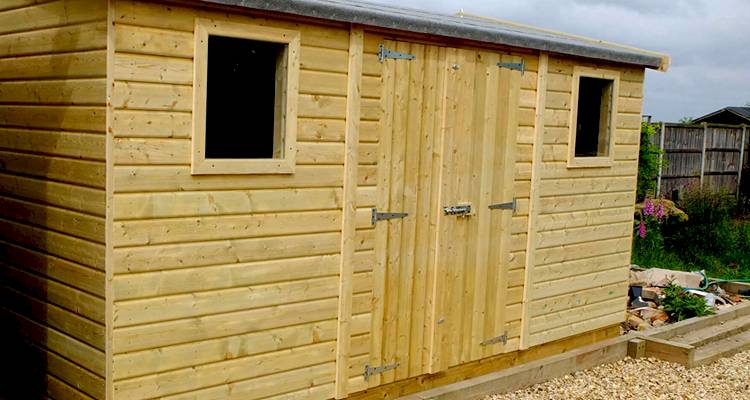
You need to ensure that it is strong enough to support the weight of your shed and its contents.
Pros:
✔ Provides a good base
✔ It lasts a long time
Cons:
✖ High base so may need steps
✖ Need room around it
Paving Slabs
This is the most popular base for sheds in the UK. They provide a solid and long-lasting base. However, they are quite heavy and difficult to install as there is a lot of groundwork needed beforehand.
Pros:
✔ Durable
✔ Long-lasting
Cons:
✖ Difficult to install
✖ Shouldn’t be placed near trees
✖ May move or settle over time
Concrete
Concrete is the strongest type of shed base that you can get. However, it can be quite expensive and very difficult to install. Plus, concrete is permanent, so you need to be absolutely sure before you have it installed, and there is no room for errors as they can’t be rectified.
Pros:
✔ Extremely durable
✔ Very long-lasting
✔ Can handle all types of sheds and outbuildings
Cons:
✖ Difficult to install
✖ It cannot be removed
✖ Expensive
Garden Shed Design Ideas
When it comes to shed designs, the possibilities are endless. There are so many exciting things that you can do to make your garden shed more practical and aesthetically pleasing. Below is a list of garden shed ideas for you to ponder over:
Customise it to Your Taste
You can easily customise your shed however you like. Most sheds can be painted, so you can paint your shed any colour you like to match your taste and your space. You can even go one step further and paint extras onto your shed, such as a mural.
You may also want to add some shelves to the outside of your shed, which you can place some small potted plants or garden ornaments on. Your new shed is an opportunity to have fun, and you can make it as unique as you like.
Install an Open Air Shed
If you live in an area that usually has good weather, then you could install an open air shed. This type of shed is great for avid gardeners as it provides tool storage where everything is easily accessible.
You can place your open-air shed right in the middle of your busy garden area so that you can reach all of your gardening equipment quickly and easily.
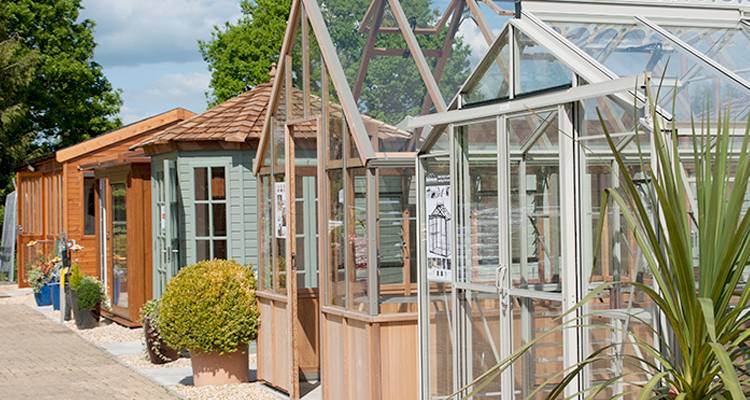
Plus, the surrounding plants and shrubs can make the shed seem like part of the garden. You can even grow some potted plants within the shed to help it blend even further.
Rustic Elegance
If you are looking for something a little more unique than your standard garden shed, you could opt for an extravagant rustic style of shed. You can create a beautiful sanctuary in your garden by adding a rustic luxury shed.
You can build your own garden shed using recycled materials, or you can purchase a read-made rustic shed kit. Add an extra touch of rustic elegance by installing a small porch on your shed and adding rocking chairs for a quiet, calm, and peaceful place to sit in your garden.
Internal Storage
If you are someone who likes to do a lot of gardening, a regular shed may become quickly overwhelmed with tools and materials. To help rectify this issue, you can install internal storage compartments in your shed.
Add things such as cupboards and shelves so that you can organise everything and keep your shed tidy.
What Are the Pros and Cons of a Garden Shed?
When deciding if a garden shed is right for you, it’s a good idea to see if the pros outweigh the cons for your particular circumstances. To help you make the right choice, we’ve created a list of the advantages and disadvantages of installing a garden shed below:
PROS
Storage
One of the biggest advantages of installing a garden shed is the storage that it provides. Even a small garden shed can create a lot of storage space without taking up too much room in the garden.
A shed can help your garden become clutter-free and will also provide you with more space inside and outside the home.
Organisation
Sheds can be great for organisation. You can store all of your garden tools and materials in spate compartments, making it easier to find everything you need very quickly.
This can make gardening a breeze and help take away the stress of finding things amongst piles of storage in the home.
Low Cost
Sheds come in a huge variety of styles, shapes, and sizes, and many are very budget-friendly. So if you are looking for a cheap storage solution for your garden, a small garden shed would work great.
Protection
Sheds can protect your goods such as gardening equipment, bicycles, or anything else that you may ordinarily have to leave outside unprotected.
Sheds usually come with a locking mechanism installed, most often a padlock. However, some homeowners prefer to add extra security to their sheds, such as burglar alarms – especially if the contents are particularly valuable.
Customisable
Sheds come in all different shapes, sizes and colours, so you can easily find one to suit your style. Most sheds can be painted, so you can customise them in any way you want to make them fit in with your garden. It can be as unique as you like.
Durable
Most sheds are quite durable and will last for many years with the right level of maintenance. Read-made sheds or shed materials will come with a warranty that tends to last for a good number of years.
CONS
Maintenance
No matter what type of shed you get, there will be some maintenance involved. Although some sheds may not need much maintenance at all, it can still be a hassle.
Wood sheds require the most maintenance as these need to be treated, stained, or regularly painted to keep the wood in good condition.
Can Be Expensive
As we’ve mentioned earlier, there are many different styles, shapes, and sizes of sheds. Many small, basic sheds can come at a low cost.
However, if you’re looking for something a bit more substantial, something customised, or something more than your average garden shed, then you could be facing some rather high costs.
Pests
If you don’t maintain your garden shed properly and don’t inspect it often, then you may find that it becomes a home for a variety of unwelcome pests.
Bugs can create a home in your shed, and even small wild animals may find a home in there, especially if the shed is unused for long periods of time.
How Much Does It Cost to Install a Shed?
The cost of building a shed at your property will vary based on several factors. These factors can include the type of shed you’re installing, the size of the shed, whether you’re building the shed yourself or hiring professionals, and your location in the UK.
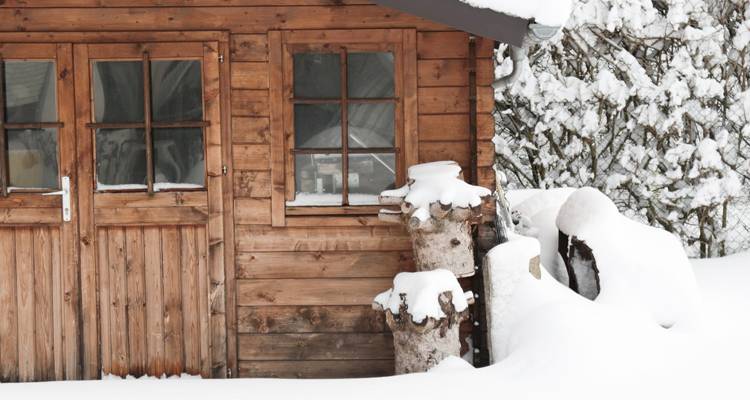
The average cost for building a shed in the UK is around £700. This includes the cost of the shed and the cost of labour for building the shed and is based on an average-sized garden shed.
For more information on the costs involved with building a garden shed, see our cost article here.
How to Build a Garden Shed
Building a shed is not too difficult, and many homeowners will choose to take this job on as a DIY project rather than hiring professionals. However, you will need two pairs of hands to complete the job properly. For larger sheds, you may even need three people.
You shouldn’t need any specialist tools to build a shed as most are just fitted together with nails or screws. A hammer and a cordless screwdriver are the two main tools you’ll need to build a shed.
The most difficult part of building a shed is building the base that the shed will sit on. The base needs to be flat and level and will need to be strong enough to hold the weight of the shed and its contents.
To assemble the shed itself, you will need an extra pair of hands to hold the different pieces together while you screw or nail them in place. The order in which each piece is assembled will depend on the type of shed, so you should always follow the manufacturer’s instructions to make sure you’re fitting each part together correctly.
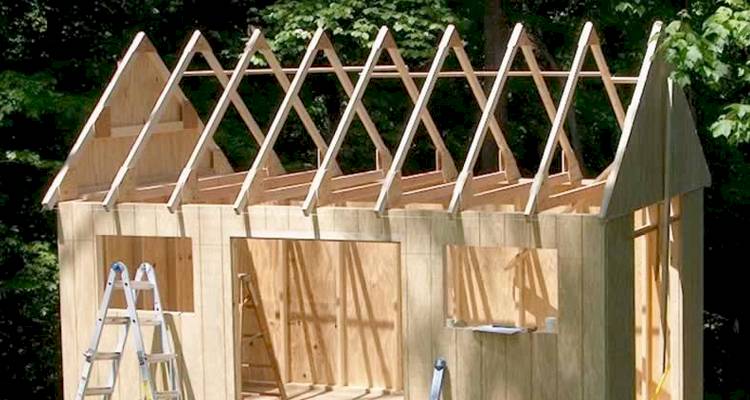
You will usually fix all four sides of the shed together and then complete the roof. Many sheds will come with their doors or windows already intact in the side panels. However, some may require you to fit these once the walls are erect.
Again, it’s important to follow the manufacturer’s instructions to ensure you’re doing everything right.
As long as you have someone there to help you with fitting everything together, and as long as you’re physically fit enough to do so, there is no reason why you shouldn’t be able to build your garden shed yourself as a DIY project.
However, if you are on your own or you don’t have any of the necessary tools, it may be better for you to hire a professional to come and build your shed for you.
How Long Does It Take to Build a Shed?
The time it takes to build your shed will depend on a few things, such as the size of the shed, the difficulty of the build, how many people are working on the job, and how much customisation is going into the build.
On average, it takes around 1-2 days to build a typical garden shed. However, if you are building a rather large garden shed or building something completely unique from scratch, you can expect these types of build to take much longer.
As long as you follow the manufacturer’s instructions, a typical shed build shouldn’t take long at all. Just make sure you have someone else on hand to help you with the job so that it all runs smoothly.
Building Regulations or Planning Permission Approval for Shed Construction
You won’t usually need to worry about planning permission when it comes to building a garden shed. However, some building regulations may need to be followed depending on the type of shed. You must ensure that your garden shed adheres to the following:
- It must be single-storey with a maximum eaves height of 2.5 metres and a maximum overall height of four metres, including the roof
- It must have a maximum height of 2.5 metres when the shed is built within two metres of a boundary
- It must have no verandas, balconies, or raised platforms
- No more than half of the area around the house can be covered by additional buildings or sheds
- If your home is a listed building, you will need planning permission
How to Clean and Maintain a Shed
You can do several things to maintain your shed and keep it in the best possible condition for years on end. Below is a list of our garden shed maintenance and cleaning tips:
Prepare for Pests
Eliminate any habitat opportunities for pests. Pests thrive on newspapers, cardboard, piles of wood, and other clutter. Minimise your risk of pests by removing anything that could make a good home for them in your shed.
You should also avoid storing any food in your shed, as many pests will be able to sniff this out. Caulk in any cracks and around the windows and doors to prevent pests from being able to enter your shed.
Take Everything Out and Clean
You should aim to do this once a year to keep your shed clean and to reduce the risk of it becoming a home for insects, mice, and other animals.
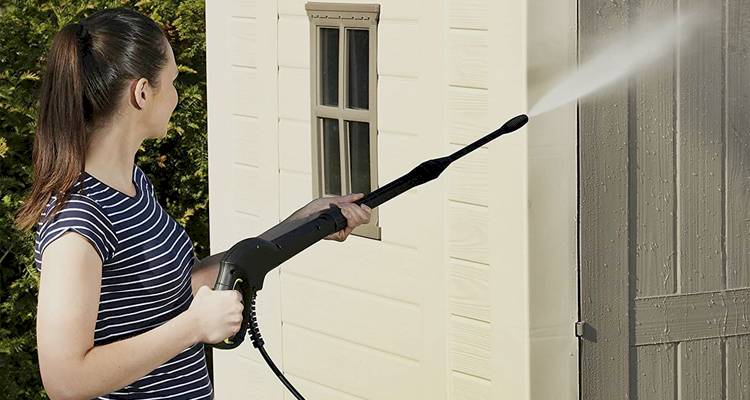
Use a duster to remove any cobwebs, sweep the floor to get rid of all debris, wipe the windows down, and organise all of your things. It’s a good idea at this point to get rid of anything that you don’t need or use. This will help to de-clutter your shed.
Paint or Stain Your Shed
Wooden sheds need to be maintained regularly to ensure the wood stays in good condition. You should aim to re-paint or re-stain your shed once a year to keep the wood fresh and keep up its appearance.
For further protection, you may also want to use a weather-proof seal over the top to ensure your shed is not affected by strong rainfall or is not damaged by power washing.
Shed Repairs
Over time, you may find that some issues arise with your shed that need to be addressed. We have created a list below of the most common shed problems and how to go about fixing them:
Leaking Shed Roof Repair
The most common type of shed roof material is roofing felt. If you notice any leaks coming through the roofing felt, then you should inspect the felt for any damage.
Once you locate the damaged area, you will need to remove the affected piece of felt. You can then lay another piece of roofing felt down and fix it in place using nails or staples.
Treating Rust
If you have a metal garden shed, you may find that some rust can appear over time. If that is the case, you can easily treat the rust by rubbing it with a wire brush, sanding down the affected area, and then treating it with rust-proof exterior paint in the same colour as the shed.
Fixing Squeaky Shed Door
If the door to your shed is starting to squeak or creak, then it’s time for some new lubricant on the hinges. Try putting a small amount of lubricant onto the hinges and lock to see if that makes a difference.
If you are struggling to open and close the door, then this may indicate that you need to replace the hinges as they do get worn over time.
Shed Window Repair
If you notice a crack in your shed window, then you will need to replace the glass. Most shed windows will have glazing beads that keep the glass in place.
Use cutter knives to remove the filler between the glass and the frame and then carefully remove the glass. You can then install a new piece of glass and replace the filler to secure it in place.
Questions to Ask When Hiring a Shed Specialist
You may need to consider several things when finding the right contractor to install your shed for you.
Below is a list of common questions that you should ask when looking for the right contractor for the job:
- Does the contractor have any qualifications that relate directly to installing sheds?
- What equipment will the contractor be using to complete the job? Will they be using the correct type of equipment? Do you need to provide any equipment?
- Does the contractor possess any form of insurance for the work? You should look for contractors who have insurance covering property damage, personal injuries, and a work guarantee.
- How much experience does the contractor have in installing sheds? Can they provide any testimonials or evidence of previous work? Can they provide photos of previous work?
- Does the contractor offer any guarantees with their work? How long does the guarantee last? What issues are covered under the guarantee? Will the contractor fix any issues that arise?
- How long will the work take to complete?
- How many contractors will be working on the job?
- Is there anything you need to do to prepare for the installation?
- Does the contractor provide shed removal and installation if you already have an old shed?
FAQs
How do you insulate a shed?
You can also lay a rug or section of carpet over the flooring to insulate it further. You can also insulate the doors and windows by ensuring they are draught-proofed.
Can you build a shed on uneven ground?
Where should I put my new garden shed?
You should also keep your garden shed away from young shrubs or trees as their roots will grow over time and could affect the settlement of the floor underneath the shed.
How can I make my shed walls waterproof?
How often should I stain my wooden shed?
Sources
http://www.a1sheds.com/blog/2016/03/05/shed-foundations-what-base-is-best
https://www.thespruce.com/garden-shed-ideas-4178306
https://homesthetics.net/what-is-a-shed
https://www.dakotastorage.com/blog/4-spring-cleaning-tips-for-your-shed-and-garage
https://advice.manomano.co.uk/how-to-repair-your-garden-shed-n5067
https://www.gardenbuildingsdirect.co.uk/blog/how-to-insulate-a-shed

